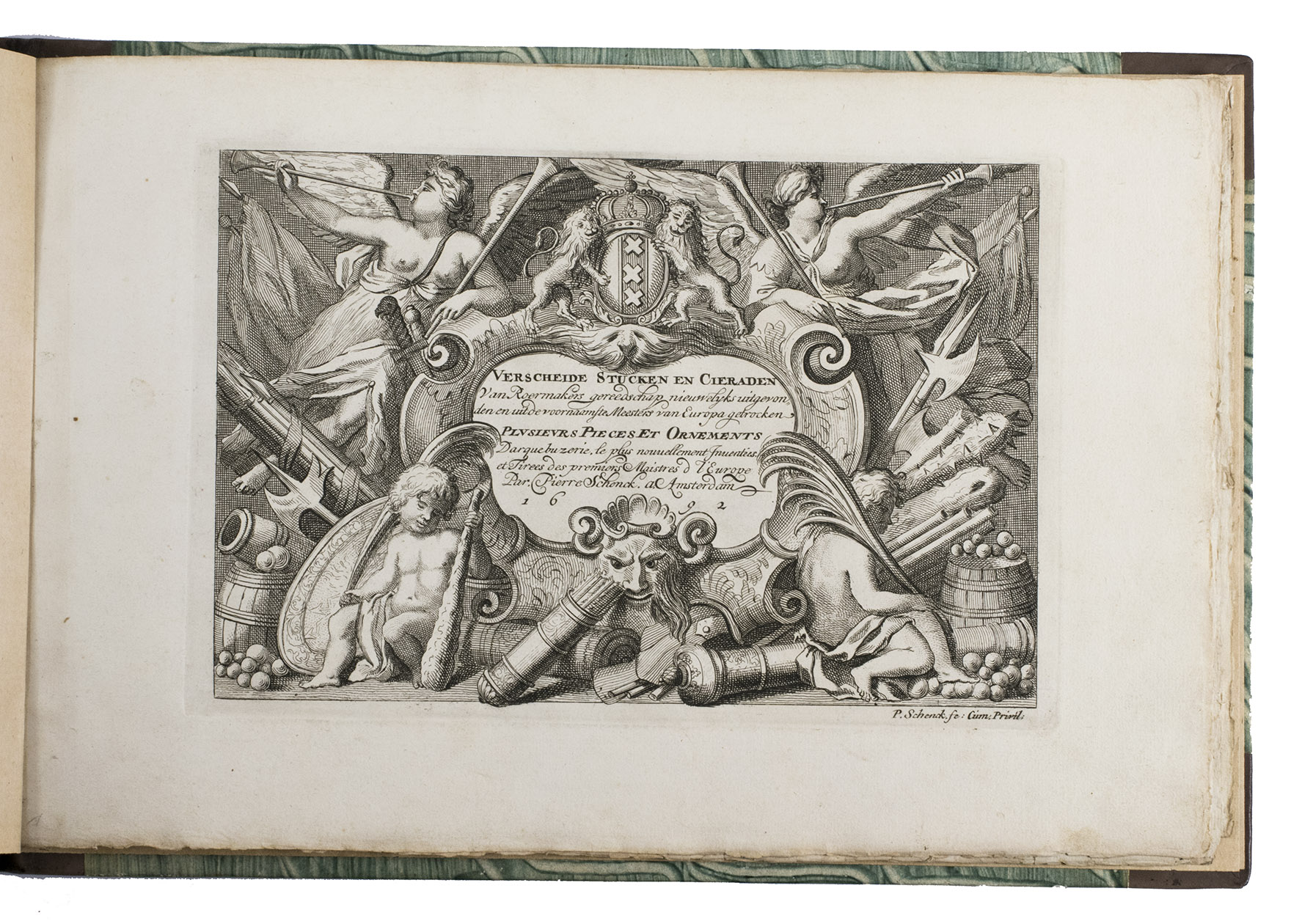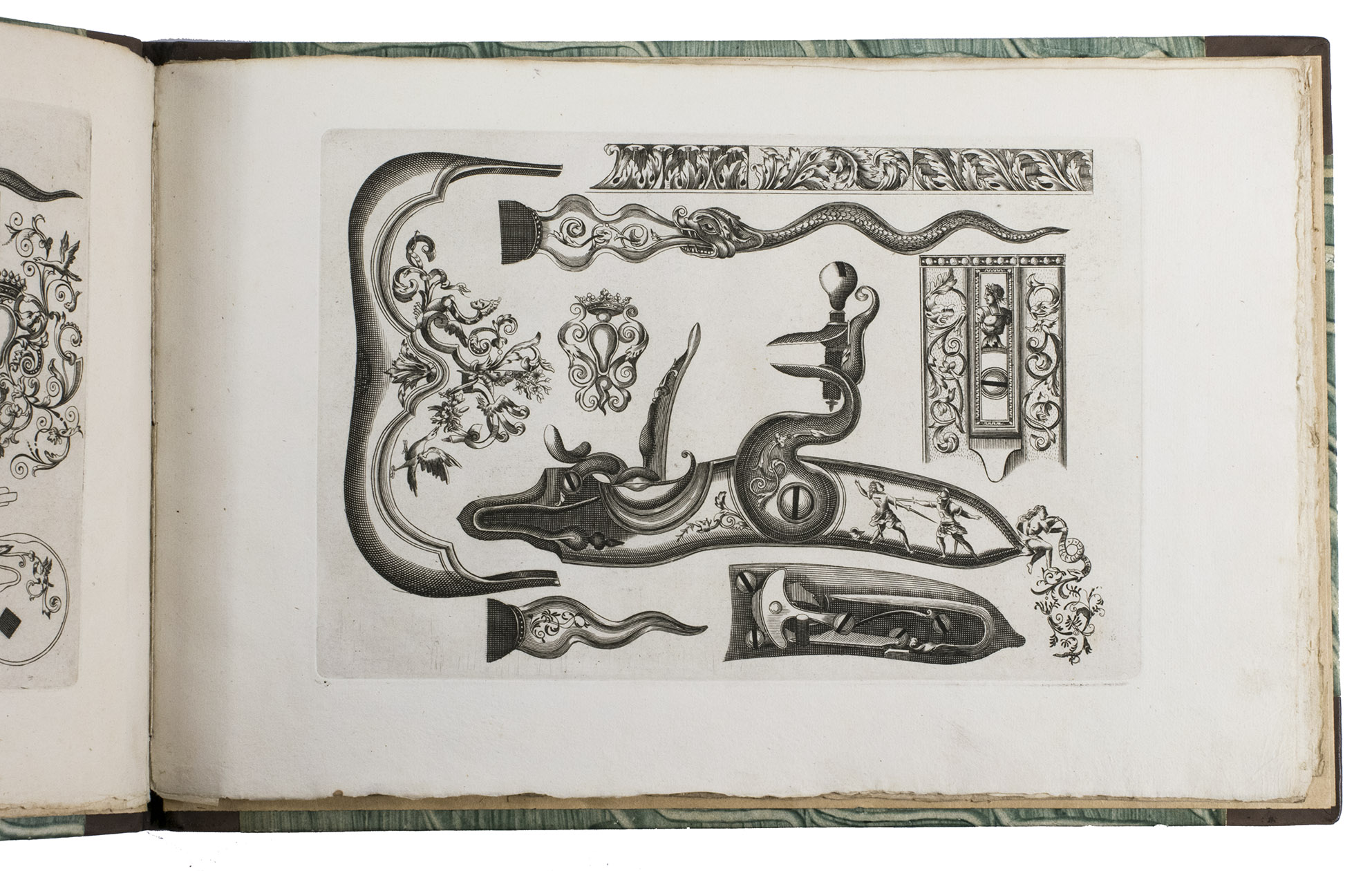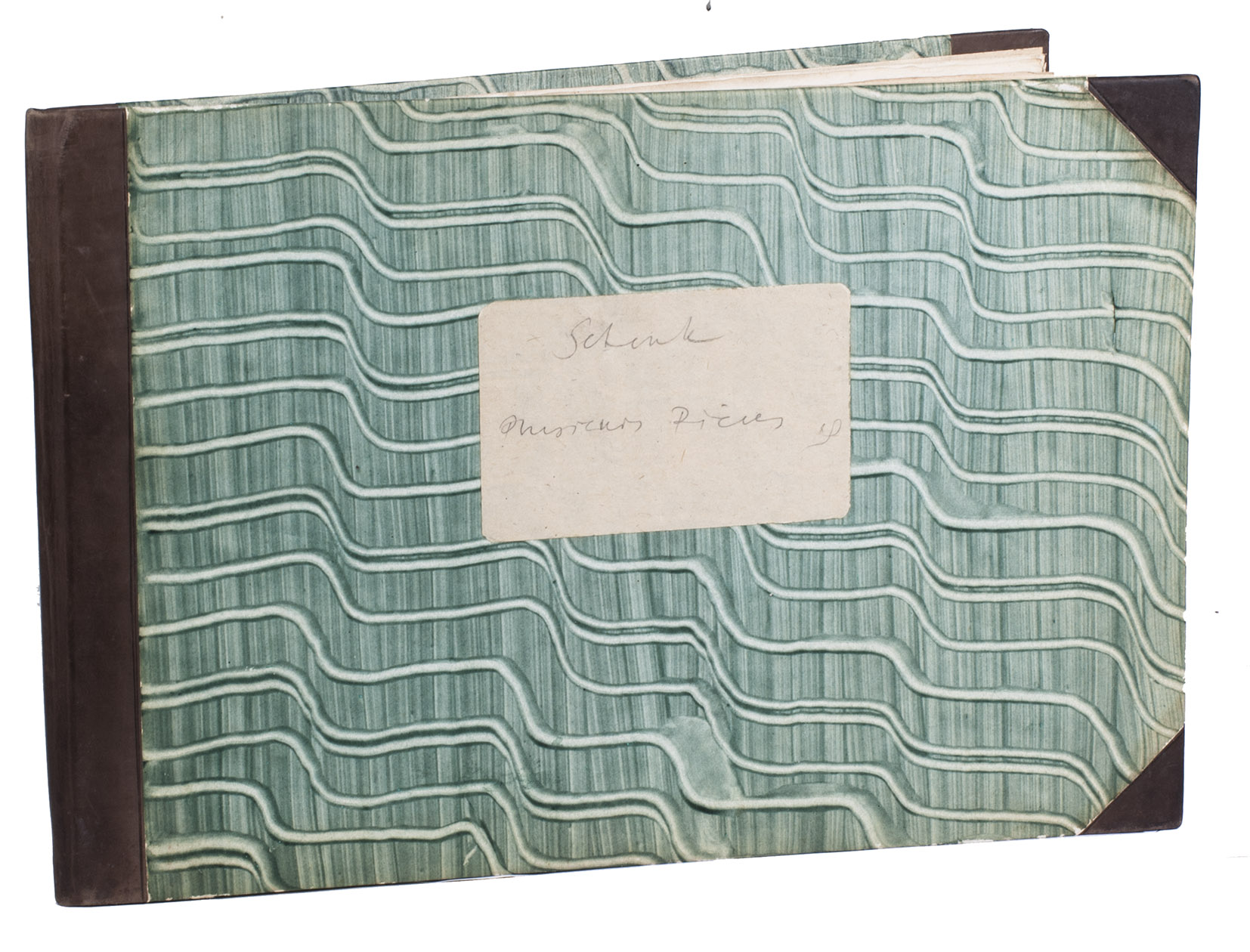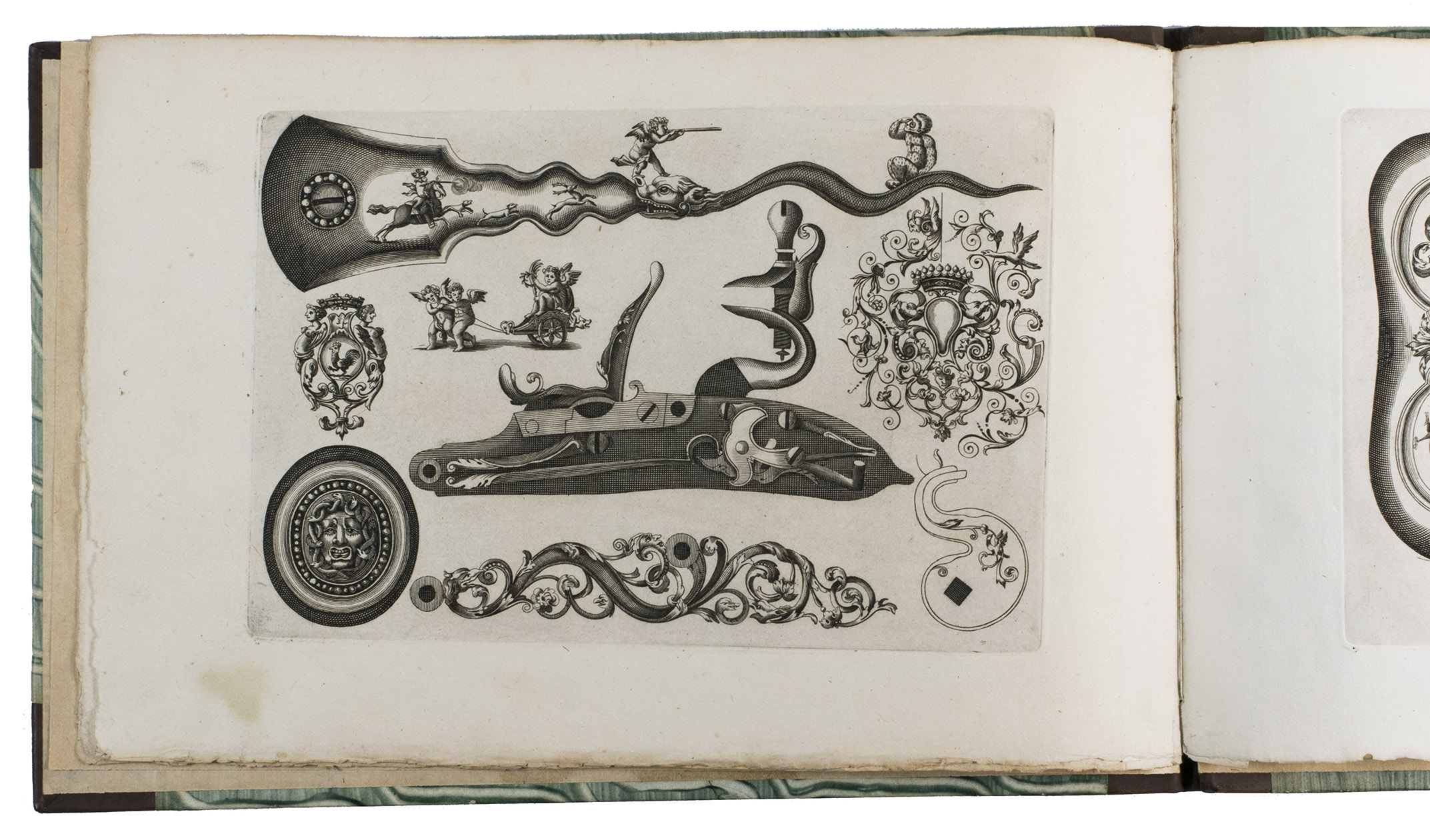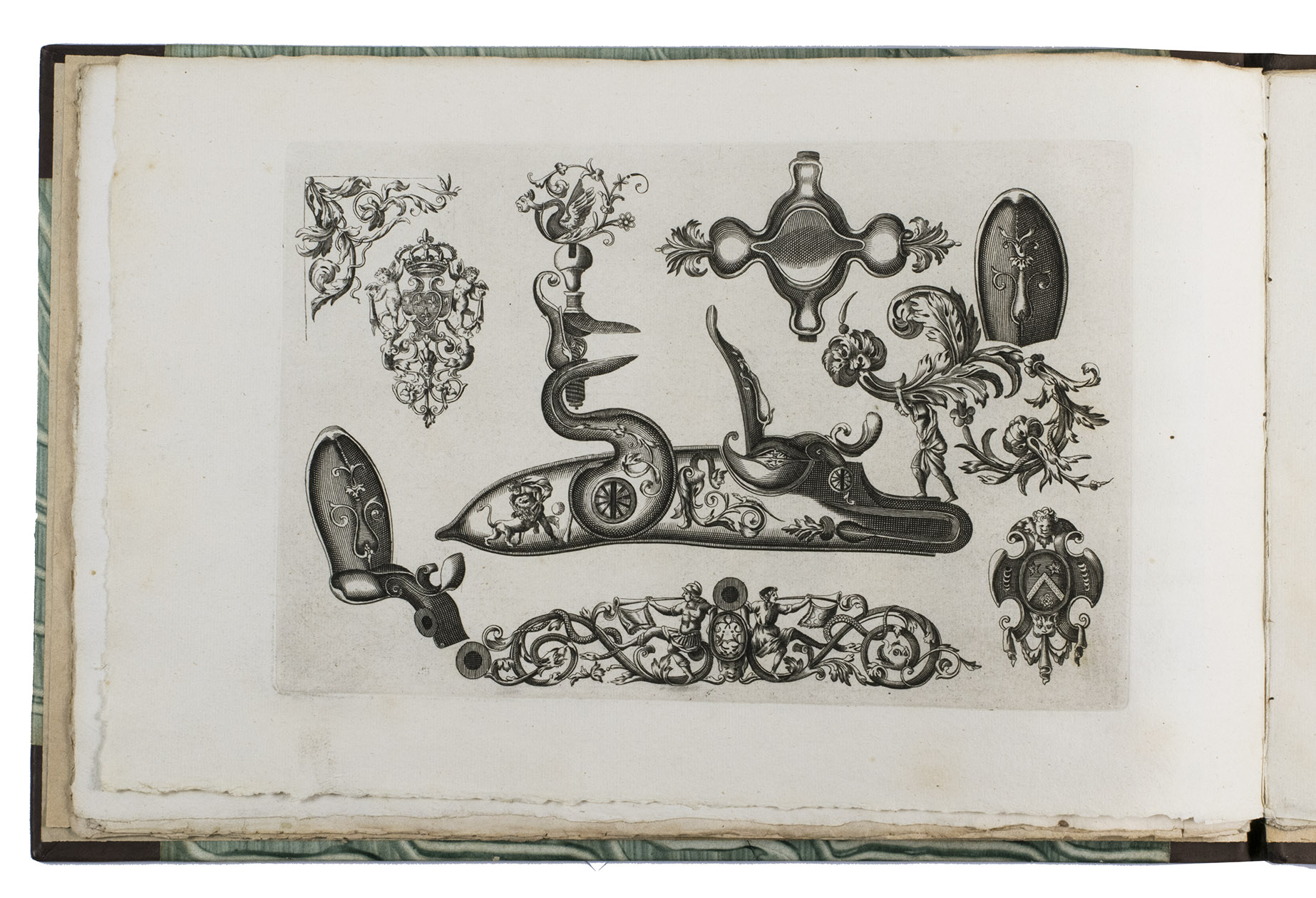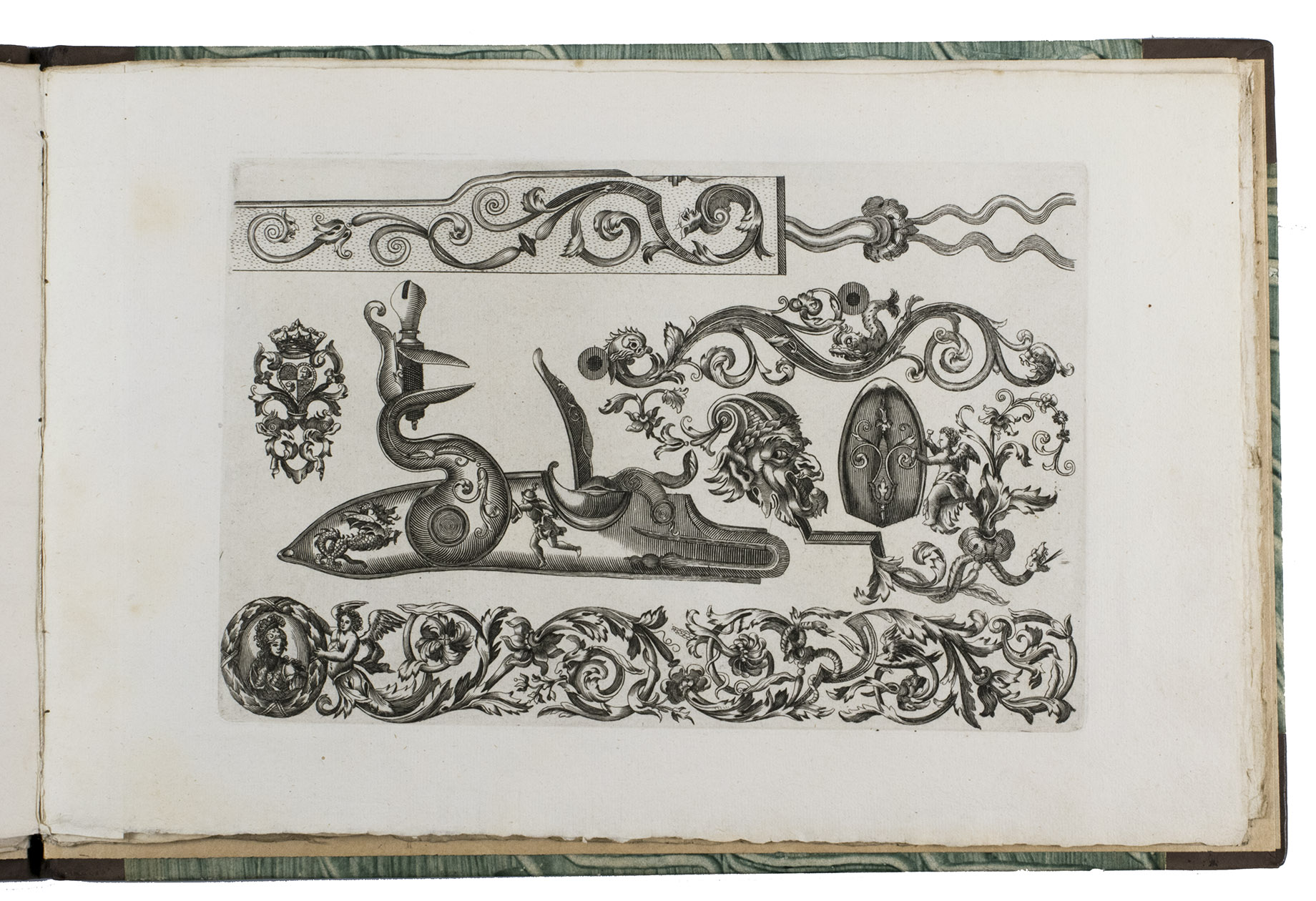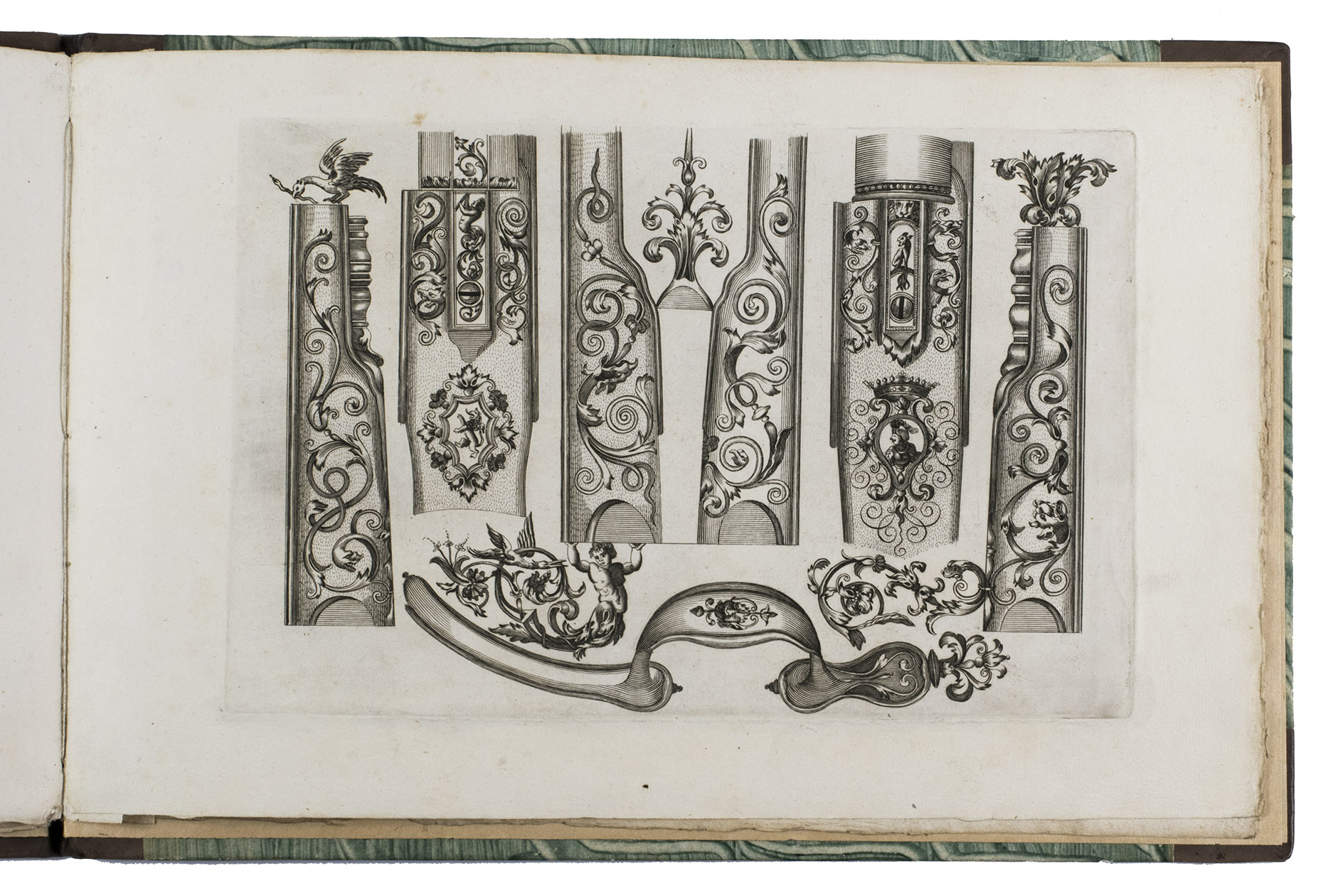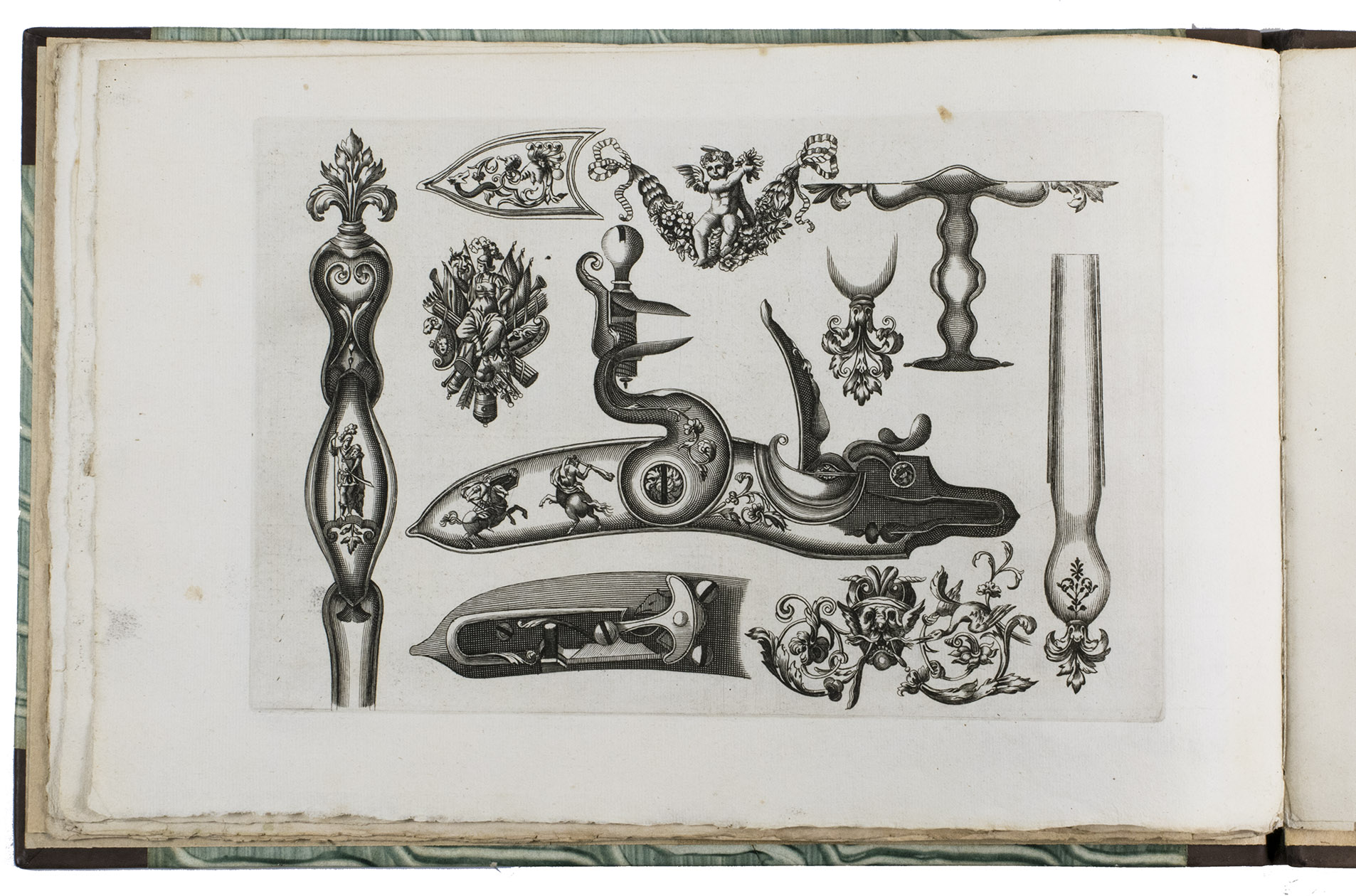SCHENK, Pieter.
Verscheide stucken en cieraden van roermakers gereedschap nieuwelijks uitgevonden en uit de voornaamste meesters van Europa getrocken. - Plusieurs pieces et ornements d'arquebuzerie, le plus nouvellement inventées et tirees des premiers maistres d l'Europe.
Amsterdam, Petrus Schenk, 1692. Oblong folio. With an engraved allegorical title-page and 7 expertly engraved plates of ornamental designs on arquebuses. Modern half calf and green decorated paper sides. [8] ll.
€ 7,500
Very rare complete and uncut copy of an expertly engraved pattern book for decorated firearms by the German engraver Petrus Schenk I (1660-1711), after the French designer of gun fittings and ornamental engraver Claude Simonin (ca. 1635-1721).
During the seventeenth century, France had superseded Germany as the leading producer of both technically innovative and highly decorative firearms. King Louis XIII of France, who reigned from 1610 to 1643, was an avid collector of firearms and a patron of French gunsmiths. Official patronage continued to flourish throughout the reign of Louis XIV (reigned 1643-1715). In the course of the 17th-century, the art, culture and style of the French court gained popularity and spread to foreign courts. The same was true for French firearms and their ornamental designs as presented in the engravings of Claude Simonin - in his first edition of Plusieurs pieces et ornements Darquebuzerie les plus en usage tire des ouvrages de Laurent le Languedoc Arquebuziers du Roy et dautres ornement inventé et gravé par Simonin (Paris, Claude Simonin, 1684) - and Petrus Schenk and others in similar pattern books. Pattern books of this type were used by practicing gunmakers and remained in use until they were worn out and/or styles changed. Consequently, the already very few surviving copies of these works are often incomplete and its leaves quite worn, making fine complete copies extra rare and precious.
These works are not only prized for their rarity, but are especially important for showing the evolution and history of 17th- and 18th-century luxury firearms.
With some pencil annotations on the recto of the first (modern) free endpaper and some slight staining to the modern front endpapers, not affecting the rest of the work. The sewing supports are slightly exposed in the gutter between leaves [3] and [4]. Otherwise in very good condition. Hollstein XXV, p. 37 (nos. 173-180); not in the STCN; cf. Donald J. Larocca, "Sorting out Simonin: pattern books for decorated firearms, 1684-1705, in: Claude Blair et al., Studies in European Arms and Armour. The C. Otto von Kienbusch collection in the Philadelphia Museum of Art (1992), pp. 184-207.
Related Subjects:
